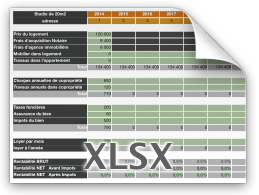

The cookie is used to store the user consent for the cookies in the category "Performance". This cookie is set by GDPR Cookie Consent plugin. The cookies is used to store the user consent for the cookies in the category "Necessary". The cookie is used to store the user consent for the cookies in the category "Other. The cookie is set by GDPR cookie consent to record the user consent for the cookies in the category "Functional". The cookie is used to store the user consent for the cookies in the category "Analytics". These cookies ensure basic functionalities and security features of the website, anonymously. Le Grès de Macquenoise, une ressource naturelle du Lochkovien (Dévonien) adaptée à la réalisation de meules à grains : carrières, propriétés du matériau, fabrication et diffusion des meules (Belgique – France).Necessary cookies are absolutely essential for the website to function properly. Pour un montage réussi, appréciez le rendement locatif saisonnier par ville en vous servant de nos analyses de villes, ou en prêtant attention aux tarifs pratiqués par les particuliers sur différents sites de mise en relation comme AirBnB ou Leboncoin. Depuis quelques années, une équipe franco-belge d’archéologues et de géologues travaille sur la caractérisation des roches meulières.

Notre étude a révélé l’utilisation fréquente de grès grossiers dévoniens originaires du Massif des Ardennes pour la fabrication de meules rotatives antiques. Ces grès sont connus sous l’appellation d’“Arkose d’Haybes” par les géologues et d’“Arkose de Macquenoise” par les archéologues.ĭepuis la Protohistoire et jusqu’à la fin de la période romaine, des meules ont été extraites de carrières à ciel ouvert situées à l’ouest de la frontière franco-belge, entre le village belge de Macquenoise (Momignies, Province de Hainaut) et la ville française d’Hirson (Département de l’Aisne, Région des Hauts-de-France). Le but de cet article est de présenter les grès lochkoviens exploités à cet endroit, ainsi que les meules à grains produites à l’époque gallo-romaine dans les différentes carrières de ce district meulier. Ces productions étant désormais bien identifiées et reconnues en de nombreux sites archéologiques de France et de Belgique, il est possible de proposer une carte précise de la diffusion de ces meules en “Grès de Macquenoise”.ġBefore the industrial era, milling stones 1 were omnipresent in the daily life of people for food preparation and specific quarries were operational as early as Neolithic times and throughout History in order to produce these increasingly advanced tools (Jaccottey & Milleville, 2010). During Neolithic and Protohistory, they consisted of a slab or saddle quern, on which a smaller rubbing stone was implemented (Hamon, 2008). From the Late Iron Age onwards and in the Roman period, the hand mill was operated by rotary movement (Jaccottey et al., 2013 Wefers, 2011): it was used by each household and consisted of two overlapping circular stones: the catillus (running upper quern) and the meta (stationary lower quern). The latter objects, and particularly the grain millstones, have the great advantage of being most resistant to weathering, hence they have high preservation potential (Delgado-Raack et al., 2009 Picavet et al., 2011 Gomart et al.Īt the same time and from the 1 st century AD onwards, the development of hydraulic and animal geared mills in northern Gaul clearly demonstrates the technical progress that characterizes Europe and the Mediterranean Basin during Antiquity (Garcia & Meeks, 1997).ĢWith the development of preventive archaeology in Western Europe during the last decades, archaeological excavations have exponentially multiplied, providing an increasingly documented dataset of stone tools (grindstones, whetstones, axes, millstones, mortars…). Numerous fragments of small querns and larger millstones have been found on archaeological sites, providing new information on the history of domestic, craft and trade practices that were part of socio-economic systems of the Ancient World. One way to reconstruct the latter systems is to analyse trade routes via the distribution of stone products (Santi et al., 2014 Clarkson & Bellas, 2014 Berrocal-Rangel et al., 2016 Turmel et al. Our research project involves a team of geologists and archaeologists (e.g.


 0 kommentar(er)
0 kommentar(er)
